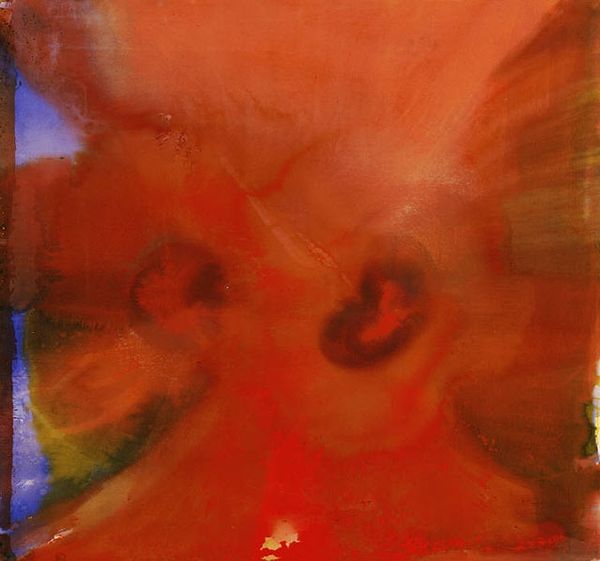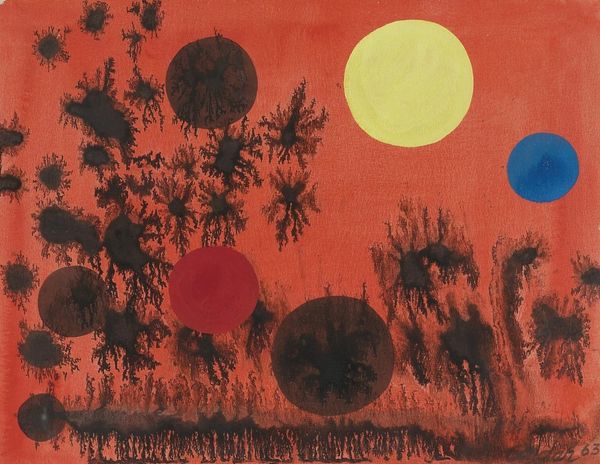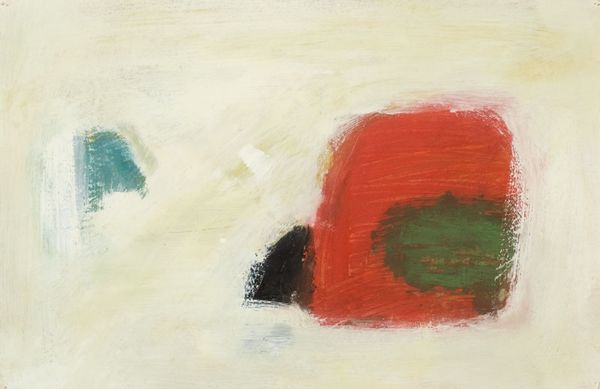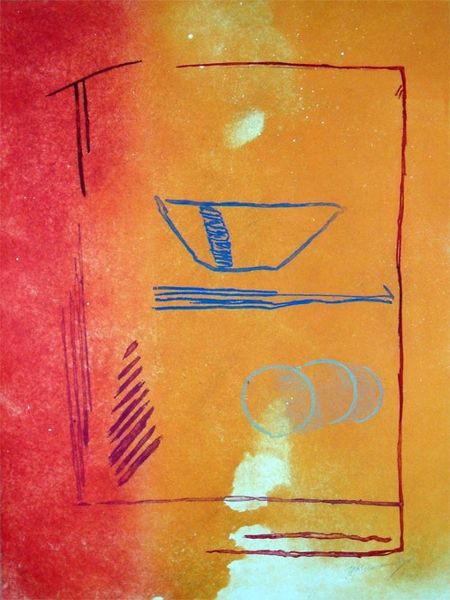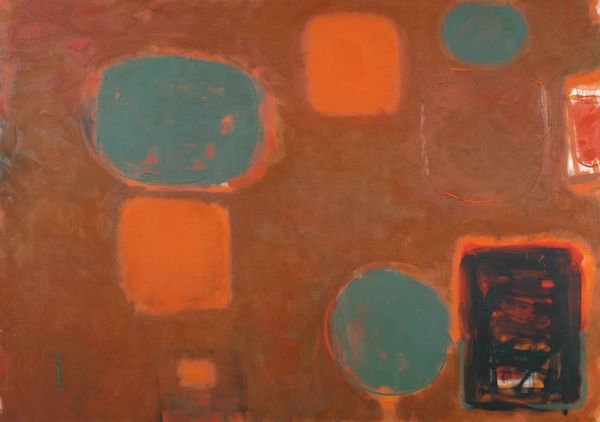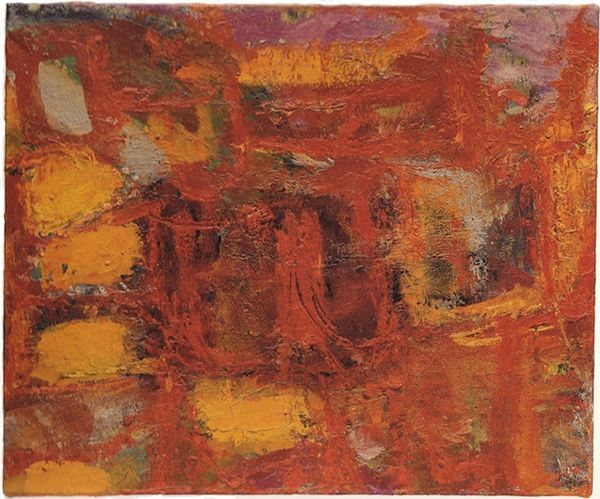
Dimensions: 30.5 x 22.9 cm
Copyright: Alice Rahon,Fair Use
Curator: Alice Rahon painted "Paseo vespertino" in 1958, using watercolor. Editor: The dominance of reds and oranges creates an almost suffocating atmosphere, although there’s also a strange dreaminess about it. A solitary bird figure gives a tiny suggestion of space, doesn't it? Curator: Yes, the layering of watercolor is crucial to that sense of unease and the composition itself supports the mood, setting that solitary element, the bird, to contrast against a muted background and more pronounced symbolic elements, squares with teal rectangles inside. How do you view this relationship? Editor: Those small geometric details, almost afterthoughts, work to punctuate the warmth that dominates the picture, adding dynamism to the piece. This piece does lean towards abstraction...what was Alice Rahon hoping to convey at the time through her choice of materials, through the application of layering and color? Curator: Considering her ties to Surrealism, it’s likely she was attempting to evoke a certain state of mind through pure expression. And of course, let's not forget that, besides the technique itself, her labor was equally important in creating that kind of mood, right? The painting’s ethereal quality would never be achieved had Rahon not focused so intensely in exploring the potential of the watercolor technique, pushing the material towards the desired output. Editor: Definitely. It is interesting how she handles this ethereal quality that evokes not only surrealism but also a connection to post-impressionism. Do you see symbolism anywhere? Curator: The simplified shapes, especially the red circle on the lower left, are symbols within this atmospheric dreamscape. Perhaps symbolizing the sun? More important, however, might be thinking about the whole context of its production as a method of achieving the surrealist ethos that Rahon’s earlier life in Europe revolved around. Editor: This return to this dream-state realm emphasizes, once again, that powerful feeling that seeps from the canvas! Curator: Indeed, reflecting on the social impact through the materiality allows us to understand it better. Editor: From form and material we find that spark, after all.
Comments
No comments
Be the first to comment and join the conversation on the ultimate creative platform.
